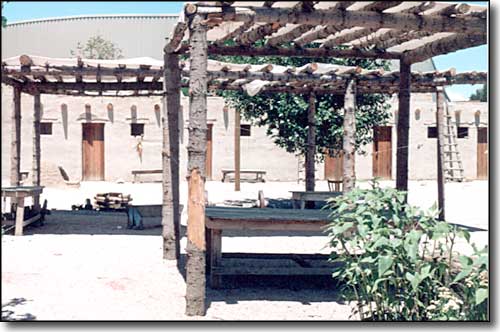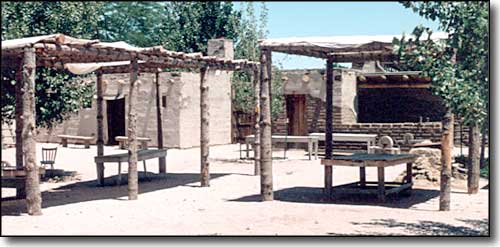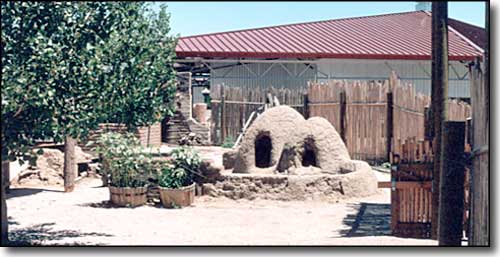
El Pueblo History Museum
Pueblo, Colorado

Today's El Pueblo Museum
It is thought that the first European construction in the area of Pueblo was most likely a small picket stockade constructed by Lt. Zebulon Pike in 1806 near the confluence of the Fountain and the Arkansas. French trappers recorded a couple of visits to the area where they found the old stockade. In 1841, George Simpson passed through and found a cluster empty log trading posts (this was a trading place that was only occupied at certain times in the winter months by some of the traders from Bent. St. Vrain & Co.).
The winter of 1841-42 was a very profitable one for Bent, St. Vrain & Company, and their traders. Some of the traders were looking around for a way to strike out on their own. Uncle Dick Wootton had just returned from a trip escorting several thousand sheep back to Missouri for Matthew Kinkead and had several thousand dollars to show for it. In May, 1842, Kinkead, Simpson, Robert Fisher, Joseph Mantz and Francisco Conn began the construction of Fort Pueblo. We have no data or drawings from the site but most historians figure it was most likely a smaller version of Bent's Fort. Over the following years, many different traders, with their Indian and Mexican wives and families, used the fort for trading purposes but they've left no clear chain of title for the property.

El Pueblo History Museum is built near the original remains of the El Pueblo Fort. The original structure was built of adobe bricks on the north side of the Arkansas River, the international border between Mexico and the United States (the river today is about 1/4 mile south of where it was then). While a lively exchange of goods and services was happening at the settlement, the El Pueblo traders were also travelling around to trade in Indian camps and throughout the region.

After years of disease, starvation and frustration at their inability to stop these foreigners from encroaching on their lands, the Utes and Jicarilla Apaches resorted to raiding the settlements. On December 24, 1854, Tierra Blanca and his Ute and Apache warriors attacked El Pueblo. They killed or kidnapped everyone in the place. Most of those kidnapped were ransomed and returned shortly afterwards but the massacre was the end of the original settlement. The neighbors came in to bury the dead and retrieve what they could, then the fort was abandoned. The next settlers in the area just built right over it like it was never there.

And then in 1988, Dr. William Buckles (of CSU-Pueblo) began an archaeological excavation to locate the remains of the original trading post. The investigation uncovered partial remains in the middle of the downtown business district. In 1990, the El Pueblo History Museum was opened very close to that excavation site. So what we have here is a reconstruction of that old settlement in the yard of the Museum building. Inside the Museum are wonderful displays and exhibits depicting what life was like for Native Americans and newcomers alike, from prehistoric times through the 1900's in southern Colorado.
Holly Dot Golf Course - Walking Stick Golf Course
Lake Pueblo State Park - Rosemount Museum
Arkansas Riverwalk - Sangre de Cristo Arts & Convention Center
San Isabel National Forest - Wet Mountains - State Trustlands & Wildlife Areas
National Park Service Sites - BLM Sites - National Wilderness Areas - Unique Natural Features
Outdoor Sports & Recreation - Ski & Snowboard Areas - Photo Galleries - Colorado Mountains
